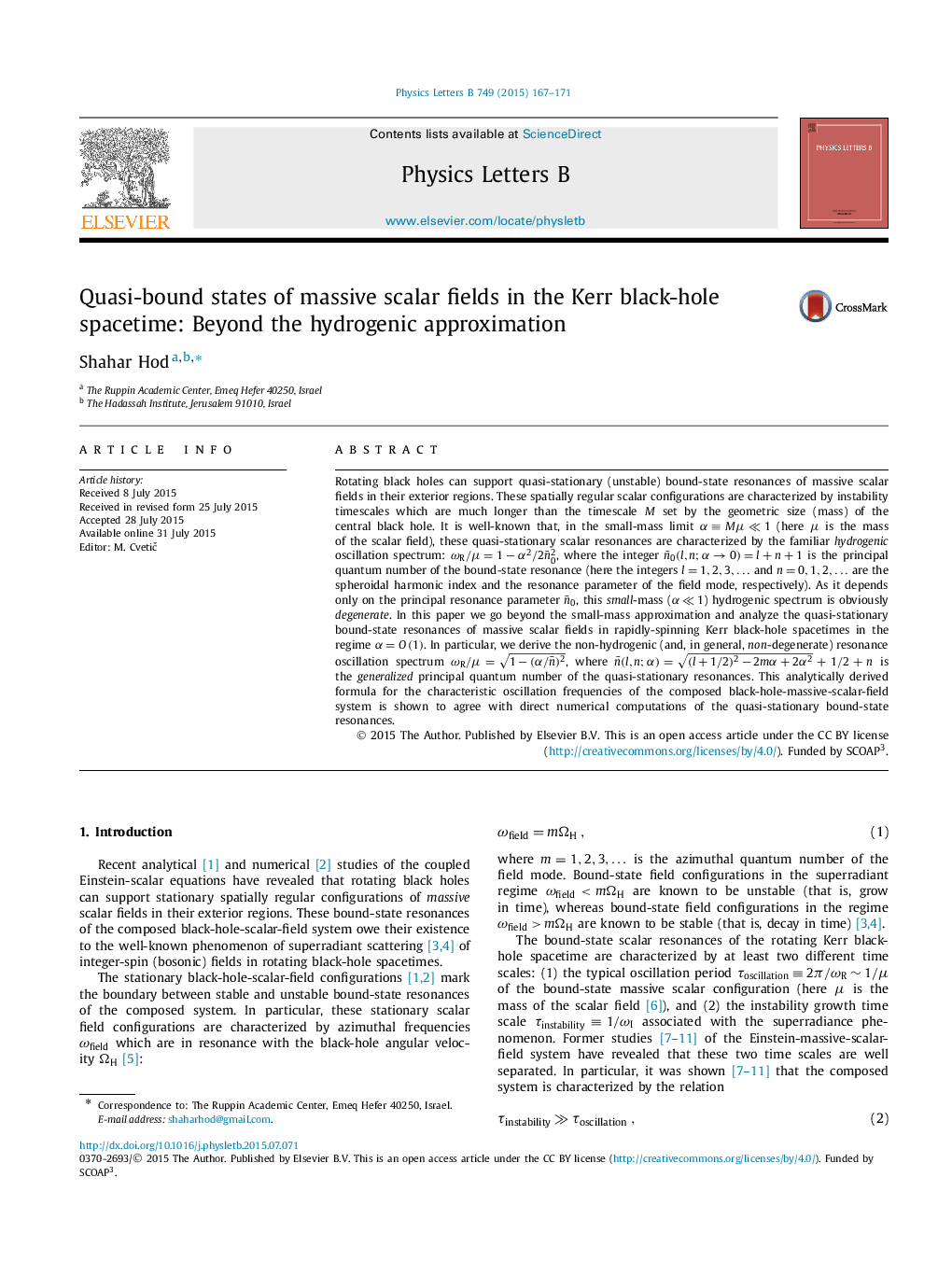| Article ID | Journal | Published Year | Pages | File Type |
|---|---|---|---|---|
| 1851578 | Physics Letters B | 2015 | 5 Pages |
Rotating black holes can support quasi-stationary (unstable) bound-state resonances of massive scalar fields in their exterior regions. These spatially regular scalar configurations are characterized by instability timescales which are much longer than the timescale M set by the geometric size (mass) of the central black hole. It is well-known that, in the small-mass limit α≡Mμ≪1α≡Mμ≪1 (here μ is the mass of the scalar field), these quasi-stationary scalar resonances are characterized by the familiar hydrogenic oscillation spectrum: ωR/μ=1−α2/2n¯02, where the integer n¯0(l,n;α→0)=l+n+1 is the principal quantum number of the bound-state resonance (here the integers l=1,2,3,…l=1,2,3,… and n=0,1,2,…n=0,1,2,… are the spheroidal harmonic index and the resonance parameter of the field mode, respectively). As it depends only on the principal resonance parameter n¯0, this small -mass (α≪1α≪1) hydrogenic spectrum is obviously degenerate . In this paper we go beyond the small-mass approximation and analyze the quasi-stationary bound-state resonances of massive scalar fields in rapidly-spinning Kerr black-hole spacetimes in the regime α=O(1)α=O(1). In particular, we derive the non-hydrogenic (and, in general, non -degenerate) resonance oscillation spectrum ωR/μ=1−(α/n¯)2, where n¯(l,n;α)=(l+1/2)2−2mα+2α2+1/2+n is the generalized principal quantum number of the quasi-stationary resonances. This analytically derived formula for the characteristic oscillation frequencies of the composed black-hole-massive-scalar-field system is shown to agree with direct numerical computations of the quasi-stationary bound-state resonances.
